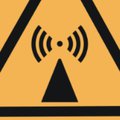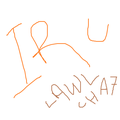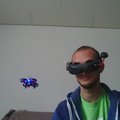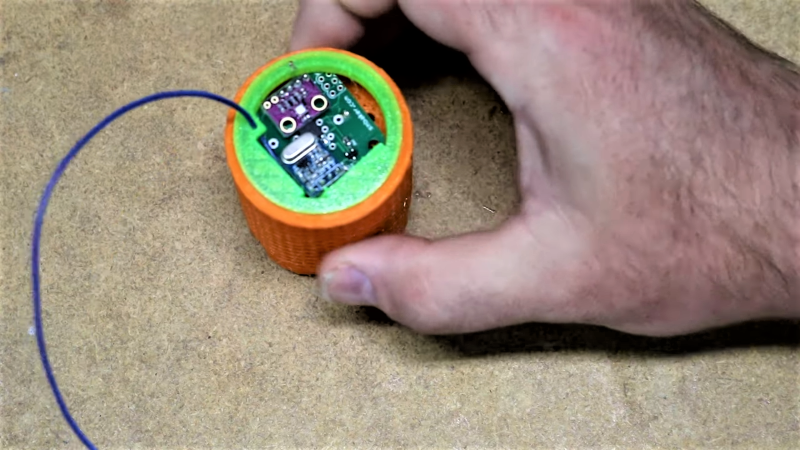
 @RichardCollins I'm playing with Viasat Surfbeam 2 modems and their TRIA's (Outdoor units) that supports Input (RX) Frequency 18.3 to 20.2 GHz
@RichardCollins I'm playing with Viasat Surfbeam 2 modems and their TRIA's (Outdoor units) that supports Input (RX) Frequency 18.3 to 20.2 GHz
Output (TX) Frequency 28.1 to 30.0 GHz. I'm getting them on various none-ebay portals for really cheap. Drop me DM and I will share with you my wiki. Or join Signals Everywhere discord where I'm pulling out my RF knowledge.
 [Arsenijs] Discord? Got an invite link?
[Arsenijs] Discord? Got an invite link?
 @Chris Capobianco You don't need an LNB, that range is covered by most RTLs, I'd recommend a helix antenna on a dish
@Chris Capobianco You don't need an LNB, that range is covered by most RTLs, I'd recommend a helix antenna on a dish
 @IRC https://signalseverywhere.com/discord
@IRC https://signalseverywhere.com/discord
 Absolutely agree. But that dog won't hunt around here - people here have a bit of a blindspot when it comes to law enforcement. Even RadioReference.com will ban you now if you complain about encryption. Kinda nutty.
Absolutely agree. But that dog won't hunt around here - people here have a bit of a blindspot when it comes to law enforcement. Even RadioReference.com will ban you now if you complain about encryption. Kinda nutty.
 yeah encryption is a very hot button topic
yeah encryption is a very hot button topic
 I hear there are a few groups planning on breaking it and presenting at Defcon, we'll see if they manage but if so it'll change the landscape
I hear there are a few groups planning on breaking it and presenting at Defcon, we'll see if they manage but if so it'll change the landscape
 Totally need to monitor the monitors for sure. Let's see... representative government is sworn with oaths and like President Lincoln stated... for the people and by the people.
Totally need to monitor the monitors for sure. Let's see... representative government is sworn with oaths and like President Lincoln stated... for the people and by the people.
 @BSA Secure Thanks I will contact you after this
@BSA Secure Thanks I will contact you after this
 More than nutty, seems like a blatant compounding and concealing.
More than nutty, seems like a blatant compounding and concealing.
 This is probably a dumb question, but are these chats logged? Can I just load this URL later and grab all the chats from this page?
This is probably a dumb question, but are these chats logged? Can I just load this URL later and grab all the chats from this page?
 @Sheridan-Tech I believe @dan
@Sheridan-Tech I believe @dan
 there will be a transcript posted after
there will be a transcript posted after
 welp that didnt work :p
welp that didnt work :p
 Yes it'll have a transcript
Yes it'll have a transcript
 @Signals Everywhere/KR0SIV Thanks, Much appreciated!
@Signals Everywhere/KR0SIV Thanks, Much appreciated!
 @Sheridan-Tech - I post transcripts right after the chat.
@Sheridan-Tech - I post transcripts right after the chat.
 Ok. At this link? Or found elsewhere?
Ok. At this link? Or found elsewhere?
 I'll post a link when it's live.
I'll post a link when it's live.
 Just keep in mind, that by observing encrypted traffic you can know of stream is voice transmission , drone-high-bandwidth video footage or small telemetry. Its like listening train that is passing by - you can know if its empty or is full of heavy elephants (even with oracle padding)
Just keep in mind, that by observing encrypted traffic you can know of stream is voice transmission , drone-high-bandwidth video footage or small telemetry. Its like listening train that is passing by - you can know if its empty or is full of heavy elephants (even with oracle padding)

Hack Chat Transcript, Part 1 | Details | Hackaday.io
TBD
 may be not know but rather assume
may be not know but rather assume
 My opinion is we need to hack relevant U.S. Jurisdiction (State, District, Tribe, Territorial and Nation) Constitutional and Statutory Law into the Public School's from kindergarten on up ASAP. Post 1960's change in being able to be admitted into the bar with a J.D. was a root cause from my observations.
My opinion is we need to hack relevant U.S. Jurisdiction (State, District, Tribe, Territorial and Nation) Constitutional and Statutory Law into the Public School's from kindergarten on up ASAP. Post 1960's change in being able to be admitted into the bar with a J.D. was a root cause from my observations.
 thank you
thank you
 Very good point @BSA Secure that's true of most digital modulations.
Very good point @BSA Secure that's true of most digital modulations.
Once you have listened for a while you get an ear for things and you can quickly determin what type of modulation it is and often if it contains data or not
 Looking back at transmit capable SDRs I'm pretty excited about DVB-S for digital amateur television
Looking back at transmit capable SDRs I'm pretty excited about DVB-S for digital amateur television

 Prior to the 1960's I think most had a basic Ten Commandment fundamentals to counter claim and defend Rights... and like Yale was the last to admit into the bar with a Bachelors of Law.
Prior to the 1960's I think most had a basic Ten Commandment fundamentals to counter claim and defend Rights... and like Yale was the last to admit into the bar with a Bachelors of Law.
 Any recommendations for a software/security person? IOT is the punching bag. If I get an SDR I want to try metasploit's hardware bridge
Any recommendations for a software/security person? IOT is the punching bag. If I get an SDR I want to try metasploit's hardware bridge
 There is a lot of good software support for them now and you can transmit low bandwidth digital tv with a PlutoSDR or limeSDR.. heck even a Raspi on it's own can do it
There is a lot of good software support for them now and you can transmit low bandwidth digital tv with a PlutoSDR or limeSDR.. heck even a Raspi on it's own can do it
 When using my RTL-SDR on ham frequencies I hear some unusual signals. Does anyone know where I can find a list or page with samples that I can compare to, to help me identify what I'm hearing? For instance if it is just interference, the signal needs to be attenuated, some type of side band, digitial, or it is encrypted.
When using my RTL-SDR on ham frequencies I hear some unusual signals. Does anyone know where I can find a list or page with samples that I can compare to, to help me identify what I'm hearing? For instance if it is just interference, the signal needs to be attenuated, some type of side band, digitial, or it is encrypted.
 OK... back to finding links for simplifying installs...
OK... back to finding links for simplifying installs...
 @James Finch legal stuff is different topic - I'm from EU and here listening on ADS-B traffic is illegal. There are laws that generally forbid you to decrypt eg P25 traffic. Putting OpenBTS is illegal in US and EU and people are doing this. Just dont f-ck with the legit service
@James Finch legal stuff is different topic - I'm from EU and here listening on ADS-B traffic is illegal. There are laws that generally forbid you to decrypt eg P25 traffic. Putting OpenBTS is illegal in US and EU and people are doing this. Just dont f-ck with the legit service
 There are a number of algorithms to pull the human signal from the radio data. Like "AM" "FM" "USB" "LSB" and so forth. It is scattered in the software, but perhaps should be set aside to investigate and test as a separate discipline.
There are a number of algorithms to pull the human signal from the radio data. Like "AM" "FM" "USB" "LSB" and so forth. It is scattered in the software, but perhaps should be set aside to investigate and test as a separate discipline.
So "Demodulation" algorithm suite that can be plugged into any SDR software?
 @Max-Felix Müller You'll want to install virtual audio cables and try to decode some stuff. there are decoders for almost anything you run into
@Max-Felix Müller You'll want to install virtual audio cables and try to decode some stuff. there are decoders for almost anything you run into
 @Maave You'll be interested in things like RTL443 https://github.com/merbanan/rtl_433 and URH https://github.com/jopohl/urh
@Maave You'll be interested in things like RTL443 https://github.com/merbanan/rtl_433 and URH https://github.com/jopohl/urh
 https://www.sigidwiki.com/wiki/Signal_Identification_Guide for visual references. I've not seen a compile app to perform a pattern recognition processing and output ranking of most likely signal yet.
https://www.sigidwiki.com/wiki/Signal_Identification_Guide for visual references. I've not seen a compile app to perform a pattern recognition processing and output ranking of most likely signal yet.
 These are great for discovering telemetry data and tearing apart modulation types
These are great for discovering telemetry data and tearing apart modulation types
 sweet, thanks
sweet, thanks

 Just wrote up a hack that used rtl_433...
Just wrote up a hack that used rtl_433...
 Nice! @Dan Maloney Not sure if I saw it or not, can you post the link?
Nice! @Dan Maloney Not sure if I saw it or not, can you post the link?
 I still need to do a video on it
I still need to do a video on it
 @BSA Secure No kidding... still Pro Se defense from my perspective unless Deliverance style juris is the best defense... and even then get's them ew ew'ing differently.
@BSA Secure No kidding... still Pro Se defense from my perspective unless Deliverance style juris is the best defense... and even then get's them ew ew'ing differently.
 You noted a great pro se defense tactic/strategy.
You noted a great pro se defense tactic/strategy.

Cheap Sensors And An SDR Monitor Conditions In This Filament Drying Farm
We don't know where [Scott M. Baker] calls home, but it must be a pretty humid place indeed. After all, he has invested quite a bit in fancy vacuum storage containers to keep his 3D-printer filament dry, with the result being this sensor-laden filament drying farm.
 Forgot which one it was. He ended up using 315 MHz for his sensors but rtl_433 still worked for that band.
Forgot which one it was. He ended up using 315 MHz for his sensors but rtl_433 still worked for that band.
 You've gotta love how cheap these little modules are
You've gotta love how cheap these little modules are
 Awesome that will be helpful. Sorry for inundating everyone with questions. I am just new to this particular portion of wireles
Awesome that will be helpful. Sorry for inundating everyone with questions. I am just new to this particular portion of wireles
 I've been considering reversing a 315 mhz RC car board so I can use an SDR to control an RC car
I've been considering reversing a 315 mhz RC car board so I can use an SDR to control an RC car
 @Sheridan-Tech That's what this is all about! Fire away, I'm here to answer questions the best I can
@Sheridan-Tech That's what this is all about! Fire away, I'm here to answer questions the best I can
 :)
:)
 I often see "Donate" and "Support" and "patreon" on software and hardware sites in this SDR community. But I am NOT going to put my credit card info on a flybynight site. Is there any thought to having better standards for things like fund raising, crowd funding, individual support? I see lots of things I want to enourage, but there is not a "safe" way to do that. Thoughts? Suggestions?
I often see "Donate" and "Support" and "patreon" on software and hardware sites in this SDR community. But I am NOT going to put my credit card info on a flybynight site. Is there any thought to having better standards for things like fund raising, crowd funding, individual support? I see lots of things I want to enourage, but there is not a "safe" way to do that. Thoughts? Suggestions?
 @RichardCollins I'm still working my way back in Reddit posts since searches aren't coming up with what I'm looking for. I did find these references to consider for procedures development in GRC:
@RichardCollins I'm still working my way back in Reddit posts since searches aren't coming up with what I'm looking for. I did find these references to consider for procedures development in GRC:
https://wiki.gnuradio.org/index.php/Guided_Tutorial_GRC (GRC Tutorial Wiki)
https://www.instructables.com/id/RTL-SDR-FM-radio-receiver-with-GNU-Radio-Companion/ (Instructable for FM Radio)
 @RichardCollins it all depends on what you consider safe I suppose. My donate button my website uses PayPal which I trust to do right by consumers and Patreon has never done me wrong. Some accept cryptocurrency but that's not something I generally play with.
@RichardCollins it all depends on what you consider safe I suppose. My donate button my website uses PayPal which I trust to do right by consumers and Patreon has never done me wrong. Some accept cryptocurrency but that's not something I generally play with.
 I'm curious if some day with ADCs > 1Gsps, we might eventually see direct sampling SDRs, with the ability to captures masses of bandwidth instantaneously?
I'm curious if some day with ADCs > 1Gsps, we might eventually see direct sampling SDRs, with the ability to captures masses of bandwidth instantaneously?
 @anfractuosity I could see that, the problem then would be how to get that data onto your computer, USB probably wouldn't be the interface of choice at that point but rather ethernet which would drive up cost
@anfractuosity I could see that, the problem then would be how to get that data onto your computer, USB probably wouldn't be the interface of choice at that point but rather ethernet which would drive up cost
 oh yeah heh, might need pcie
oh yeah heh, might need pcie
 Seems like the extra cost could be worth it though
Seems like the extra cost could be worth it though
![]() Always, the issue is not about acquisition
Always, the issue is not about acquisition
 @anfractuosity they already exist, they're just in "call for a quote" price territory
@anfractuosity they already exist, they're just in "call for a quote" price territory
 I just bought a 5.85 GHz drone camera receiver just look at. VERY nice looking hardware, but I have not a clue how to get the signal from it into my SDRs. I am a mathematical statistician not a digital engineer. Is there any way for ALL these hints and clues and methods to be kept where it accessible to everyone - all the time?
I just bought a 5.85 GHz drone camera receiver just look at. VERY nice looking hardware, but I have not a clue how to get the signal from it into my SDRs. I am a mathematical statistician not a digital engineer. Is there any way for ALL these hints and clues and methods to be kept where it accessible to everyone - all the time?
Richard Collins, The Internet Foundation

![]() but how do you get the data into your system
but how do you get the data into your system
 Being able to capture lots of bandwidth is nice but I still prefer to use the least I can, it's part of why I use an RTL-SDR when I have an Airspy R2 sitting there. They both work well but the more bandwidth you're looking at the more likely you'll lose your signal in all that nosie
Being able to capture lots of bandwidth is nice but I still prefer to use the least I can, it's part of why I use an RTL-SDR when I have an Airspy R2 sitting there. They both work well but the more bandwidth you're looking at the more likely you'll lose your signal in all that nosie
 @RichardCollins et.al. Found the reference for the Windows 10 GRC install:
@RichardCollins et.al. Found the reference for the Windows 10 GRC install:
https://www.reddit.com/r/GNURadio/comments/ao79a5/grc_on_windows_7_pro/
 noise*
noise*
![]() at such high speed
at such high speed
![]() (also hiiii! :D )
(also hiiii! :D )
 The ethernet technology is much more mature and less costly than USB. Steep learning curve but worth it.
The ethernet technology is much more mature and less costly than USB. Steep learning curve but worth it.
 @RichardCollins Not many SDRs go that high but the PlutoSDR can as well as the HackRF
@RichardCollins Not many SDRs go that high but the PlutoSDR can as well as the HackRF
 https://www.pervices.com/shop/ - 1GHz BW for only $73k :p
https://www.pervices.com/shop/ - 1GHz BW for only $73k :p
 You can technically use an RX5808 as a down converter too
You can technically use an RX5808 as a down converter too
 haha cheers @Mike Walters , bit out of my price range
haha cheers @Mike Walters , bit out of my price range
 to me it's less about bandwidth and more about frequency range
to me it's less about bandwidth and more about frequency range
 ofc with the ranges most SDRs cover today you can down convert almost anything else you might want/need
ofc with the ranges most SDRs cover today you can down convert almost anything else you might want/need
 Sampling rate also.
Sampling rate also.
 What would be nice is if I could find a 4 or 5 ghz oscillator and build a down converter for 5ghz
What would be nice is if I could find a 4 or 5 ghz oscillator and build a down converter for 5ghz
 Seems Ethernet when I looked at last for being most cost effective. Fiber optic interfaces would be awesome, though cost more.
Seems Ethernet when I looked at last for being most cost effective. Fiber optic interfaces would be awesome, though cost more.
 Sample rates are important but generally 2.8msps is plenty imo
Sample rates are important but generally 2.8msps is plenty imo
![]() I'm sure you can, just don't know the cost :P
I'm sure you can, just don't know the cost :P
 I have SDRs that'll do 10-20 and even 30+ msps but limited to a USB 2.0 interface
I have SDRs that'll do 10-20 and even 30+ msps but limited to a USB 2.0 interface
 Generally the most I'll use is 20msps since I can look at an entire trunking system at once
Generally the most I'll use is 20msps since I can look at an entire trunking system at once
 I guess I'm thinking in more a real or near real time wide frequency range... and to obtain a more accurate widest frequency range.
I guess I'm thinking in more a real or near real time wide frequency range... and to obtain a more accurate widest frequency range.
 but with two RTLs I can track it all the same so it's nice to have but my focus is on rx sensitivity
but with two RTLs I can track it all the same so it's nice to have but my focus is on rx sensitivity
 @Signals Everywhere/KR0SIV You are talking about the difference between looking at a source at a particular center frequency, and looking over a range of frequencies. I am setting up to scan the full range of each of my SDRs continously for decades. It is to map the electromagnetic "weather" of the earth at fine detail. It requires global networks of SDRs continuously recording, analyzing, comparing, calibrating and working together. We are just at the very beginnings.
@Signals Everywhere/KR0SIV You are talking about the difference between looking at a source at a particular center frequency, and looking over a range of frequencies. I am setting up to scan the full range of each of my SDRs continously for decades. It is to map the electromagnetic "weather" of the earth at fine detail. It requires global networks of SDRs continuously recording, analyzing, comparing, calibrating and working together. We are just at the very beginnings.
 interesting concept
interesting concept
 Like I said it's all about individual needs, for something like that I could see where that would be beneficial
Like I said it's all about individual needs, for something like that I could see where that would be beneficial
 You mentioned earlier about using a filter, when transmitting, can you get a little box, that you can easily change the filter properties, for different bandwidths/ frequencies?
You mentioned earlier about using a filter, when transmitting, can you get a little box, that you can easily change the filter properties, for different bandwidths/ frequencies?
 Yeah, love to see a writeup, even if you're still just planning
Yeah, love to see a writeup, even if you're still just planning
 for me and many who are just playing around generally it's about having the capability tune to whatever freq they want and decode or manipulate it... or it's about tx capability
for me and many who are just playing around generally it's about having the capability tune to whatever freq they want and decode or manipulate it... or it's about tx capability
![]() you'd rather do that in DSP @anfractuosity
you'd rather do that in DSP @anfractuosity
 @anfractuosity not that I've seen, those I've seen people build them for HF
@anfractuosity not that I've seen, those I've seen people build them for HF
![]() which is what makes SDR so powerful :P
which is what makes SDR so powerful :P
 im referring to transmission though, to filter harmonics @Joyce
im referring to transmission though, to filter harmonics @Joyce
![]() oh haha
oh haha
 Hi @Joyce !
Hi @Joyce !
 I am looking mainly at the microHertz to kiloHertz range. The signals are mixed and have many human interferences. So mapping the earth's electromagnetic field is just so I can tease out the low frequency interference with the
I am looking mainly at the microHertz to kiloHertz range. The signals are mixed and have many human interferences. So mapping the earth's electromagnetic field is just so I can tease out the low frequency interference with the
 Dan Maloney
Dan Maloney

Discussions
Become a Hackaday.io Member
Create an account to leave a comment. Already have an account? Log In.